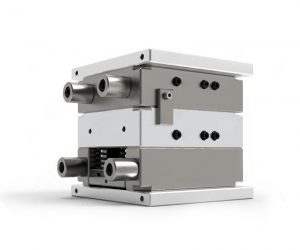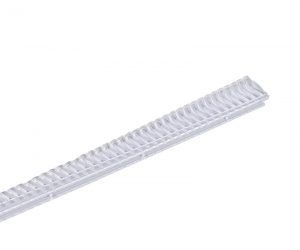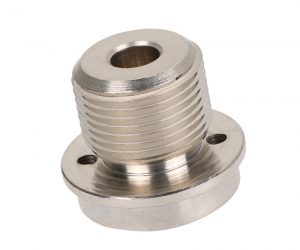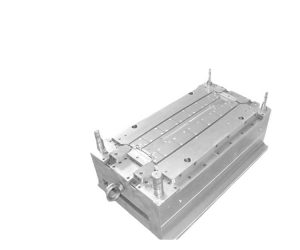The issues you mentioned, such as scrap jumping, waste plugging, poor flaring, and uneven trimming, are common molding defects that can occur during the injection molding process. These defects can impact the quality and consistency of the molded parts. Let's address each of these issues separately:
- Scrap Jumping: Scrap jumping, also known as sprue sticking or runner sticking, occurs when the sprue or runner sticks to the mold instead of being cleanly ejected. This can result from inadequate mold release, improper ejection system, or poor temperature control. Ensure that the ejection system is functioning correctly, use appropriate mold release agents, and maintain proper mold temperature to prevent scrap jumping.
- Waste Plugging: Waste plugging refers to the blockage of material flow in the mold, leading to incomplete filling or trapped air pockets. This issue can be caused by improper gate design, inadequate venting, or inadequate injection pressure. Verify that the gate design and size are suitable for the material being used and ensure proper venting to allow trapped air to escape during filling.
- Poor Flaring: Poor flaring or flashing occurs when excess material protrudes from the parting line or mold seams. This defect can result from excessive injection pressure, poor mold alignment, or worn mold components. Check for proper mold alignment and wear on the mold surfaces, and adjust injection pressure as necessary to reduce flaring.
- Uneven Trimming: Uneven trimming of the molded parts can occur due to improper trimming tools or inconsistent trimming techniques. Ensure that the trimming tools are sharp and in good condition, and that operators are trained to perform even and consistent trimming.
The exigencies of high-quality plastic injection molding demand a far more nuanced approach than mere adherence to procedural checklists. Success hinges on a sophisticated interplay of material science, thermodynamic principles, and a deeply intuitive understanding of the molding process itself. This isn't simply a matter of adjusting parameters; it's about deciphering the chaotic ballet of molten polymer under immense pressure, navigating the treacherous currents of heat transfer within a complex mold geometry, and anticipating the subtle, often unpredictable, consequences of even minor deviations.
Firstly, the selection of raw materials transcends a simple specification sheet. Rheological properties, molecular weight distribution, and the inherent susceptibility to degradation under shear stress must be meticulously considered. The injection parameters – velocity profiles, pressure transients, and meticulously controlled temperature gradients – are not independent variables but rather intricately interwoven factors influencing the final microstructure and, consequently, the mechanical properties of the molded part. Failure to account for the non-linear interactions between these parameters can lead to a cascade of defects, ranging from subtle warping to catastrophic mold failure.
Secondly, mold design transcends mere aesthetics. It's an exercise in computational fluid dynamics, thermal engineering, and the art of predicting the complex flow behavior of highly viscous non-Newtonian fluids. The design must not only accommodate the intended part geometry but also anticipate and mitigate potential hotspots, flow stagnation zones, and the insidious effects of residual stresses. Employing advanced simulation techniques, such as finite element analysis (FEA) and computational fluid dynamics (CFD), is not optional; it's paramount to preempt potential manufacturing nightmares.
Furthermore, the seemingly mundane task of mold maintenance becomes a critical control point. Microscopic imperfections, accumulated debris, and the insidious creep of wear can subtly alter the mold's geometry, leading to gradual degradation of part quality. Proactive maintenance, incorporating sophisticated diagnostic techniques and predictive modeling, is essential to prevent catastrophic failures and maintain consistent production output.
The injection molding process itself is a dynamic system, susceptible to unexpected fluctuations and perturbations. Robust process control, leveraging advanced sensor technology and real-time data analysis, is crucial to detect and correct deviations before they escalate into major defects. This necessitates a deep understanding of statistical process control (SPC) and the ability to interpret complex data sets to identify root causes and implement effective corrective actions.
Finally, the pursuit of excellence demands continuous improvement. This involves not only rigorous adherence to established best practices but also a proactive embrace of cutting-edge technologies and methodologies. The injection molding landscape is constantly evolving, and staying ahead of the curve requires a commitment to continuous learning, experimentation, and a willingness to challenge conventional wisdom.
In conclusion, mastering the art of plastic injection molding requires a holistic approach that integrates material science, engineering principles, and a deep understanding of the inherent complexities of the process itself. It's a journey of continuous learning, adaptation, and a relentless pursuit of perfection, where even minor oversights can have significant consequences.
The following presents a refined analysis of common die-casting defects, moving beyond simplistic troubleshooting to encompass the underlying metallurgical and mechanical principles. The categorization remains, but the solutions offered are more nuanced and consider cascading failure modes.
I. Scrap Jumping: An Analysis of Extrusion and Fracture
a. Insufficient Punch Length: The observed punch length inadequacy isn't merely a matter of adding 1mm. It necessitates a recalculation of the shear zone considering material properties (tensile strength, yield point, and ductility) and punch geometry (rake angle, cutting edge radius). Failure to account for these factors leads to increased friction, premature punch wear, and ultimately, scrap jumping. A finite element analysis (FEA) may be required for optimal punch design.
b. Excessive Die Clearance: While reducing clearance is a viable solution, it introduces the risk of increased die wear and potential seizure. Coating application should specify a coating with appropriate shear strength and coefficient of friction for the material being processed. The selection of coating material is crucial and depends on the material being stamped and the operating conditions.
c. Punch/Die Magnetization: Residual magnetism can significantly affect the material flow during stamping, leading to unpredictable results. Demagnetization is essential, but the process itself should be verified using a gaussmeter to ensure complete demagnetization. Furthermore, the susceptibility of the punch and die materials to magnetization should be considered during material selection.
II. Waste Plugging: A Confluence of Geometric and Material Factors
a. Hole Deviation: Simple enlargement is insufficient. The root cause of the deviation must be identified (e.g., misalignment, die wear, material inconsistencies). Precise measurement and analysis of the die are crucial, potentially involving coordinate measuring machine (CMM) inspection.
b. Chamfered Blanking Hole: While increasing the hole diameter addresses the immediate issue, it's a palliative measure. The underlying cause of the chamfer (e.g., improper die design, tool wear) must be corrected.
c. Straight Wall Length: Modifying the geometry through tapering or reverse expansion addresses the symptom, but a comprehensive analysis of the material's flow behavior during the blanking process is necessary to prevent recurrence.
d. Excessive Straight Wall: Drilling the reverse side is a temporary fix. The die design needs reevaluation to optimize the material flow and minimize the length of the straight wall. This may involve changes to the die's geometry or the selection of a different blanking process.
e. Cutting Edge Collapse: Regrinding is insufficient; the cause of the collapse (e.g., excessive force, material defects, improper heat treatment) must be identified and rectified. Microscopic analysis of the failed cutting edge may be necessary.
III. Poor Flaring: A Study in Shear and Friction
a. Edge Fracture: Regrinding addresses the immediate problem, but preventative measures are necessary. This includes examining the material's microstructure for potential defects and optimizing the cutting parameters to reduce stress concentrations.
b. Excessive Clearance: Precise adjustment of the clearance is critical. The use of shims or other precision adjustment methods is recommended, and the clearance should be verified using a precision measuring instrument.
c. Poor Die Finish: The concave die edge needs to be polished to a specified surface roughness to minimize friction and material deformation. The selection of polishing techniques and abrasives is crucial.
d. Insufficient Clearance: Die remaking is a significant undertaking. A more thorough analysis of the die design and material properties is necessary to prevent recurrence.
e. Excessive Ejecting Force: While spring replacement reduces the force, the root cause of the excessive force (e.g., friction, die design) needs investigation. FEA can help optimize the ejection system design.
IV. Uneven Trimming: A Matter of Precision and Control
a. Positioning Offset: Precise adjustment of the positioning mechanism is crucial. Calibration and verification of the positioning system are essential.
b. Unilateral Forming: Increasing pressing force is a temporary fix. A more thorough analysis of the forming process and material behavior is needed to ensure uniform forming.
c. Design Error: Redesigning the cutter requires a detailed analysis of the trimming process. FEA can help optimize the cutter design to ensure uniform trimming.
d. Feeding Issues: Adjusting the feeder addresses the symptom but doesn't address the underlying cause of the feeding problem. A thorough review of the feeding mechanism and its parameters is necessary.
e. Feeding Step Error: Recalculating the feeding step is essential, but verification of the calculation and the accuracy of the tool position is crucial.
These expanded explanations move beyond simple solutions and emphasize a deeper understanding of the underlying mechanical and metallurgical principles governing the processes. A proactive, analytical approach, incorporating advanced techniques like FEA and microscopic analysis, is essential for preventing these defects and ensuring consistent, high-quality production.




